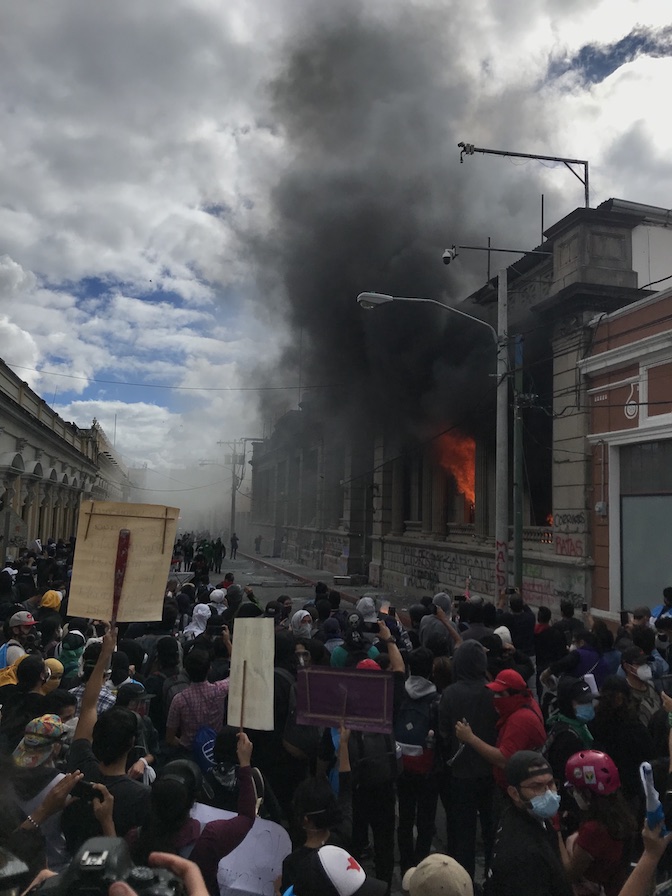
The Spectrum of Research and Practice in Guatemalan Science Studies
On November 21, 2020, protestors flooded the historic and political center of Guatemala City over the congressional approval of a budget bill of nearly twelve billion dollars (or ninety-nine billion Quetzales). The proposed budget not only significantly decreased aid to dire and already underfunded public health initiatives but allocated money to ministries known for robbing and vacating government funds. While protestors gathered in the capital’s Parque Central, youth on the frontlines cathartically set fire to the Congressional building only several blocks away and confronted the National Civilian Police (PNC) in order to limit their advancement onto the much larger, peaceful crowd. Guatemala’s recently elected president and former director of the Guatemalan penitentiary system, Alejandro Giammattei, and his administration stood by as the PNC threw tear-gas, harassed, and arrested protestors in sight on charges of illegal protest and public disorder. (read more...)

